I grew up believing that gardens were green. End of discussion. But when I relocated to the dry climate of Idaho, I found myself faced with the harsh reality that green gardens aren’t always an option. I’d heard of zeroscaping before then- the practice of landscaping using mostly rocks, gravel, and other non-organic elements to reduce water waste. It had never occurred to me that I would ever need to borrow from its tenets because, like I said, gardens are green. It took an educational trip to Tucson, Arizona, to show me that even a garden made mostly out of stone can be beautiful.
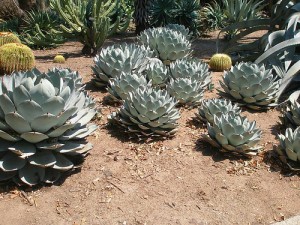
A Picturesque (& Water-Wasting) Garden
Some of my earliest memories are of wandering my Nana’s Virginian garden. Massive oaks, lush lawns, seemingly endless flower beds- that is the garden I fell in love with and have been emulating all my life. However, I’ve since moved away from the East coast in favor of the big skies of the west. Out here, such gardens are difficult to maintain and require much more water than the ecosystem is able to provide. So I had to learn to express myself and nurture my plants without denting the water supply.
Saving Water
A year or so ago, I visited my friend Genie at her home in Tucson. She was in the process of designing her new yard and had put off the project to wait for my arrival because she wanted my opinion on her garden.
My go-to gardening techniques growing up always had to do with designing the color schemes of plants, the nuances of shrub height, and generally how to keep things neat and green. Imagine my dismay when Genie nixed almost all of my plant ideas! She was firm in wanting to utilize the concepts of zeroscaping, something I had never dabbled in before. There are often caps on water usage in Tucson, she explained, and she didn’t want to plant anything that would suffer because of water conservation efforts.
Embracing Zero
As Genie explained to me, the elements of gravel, stone, and cement would dominate. A zero-scaper can afford to think artistically because the hard, nonorganic elements make such a strong statement. The plants selected would be chosen for their hardiness and their accent to the hard elements.
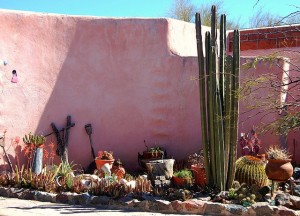
It took some doing to pry me out of my gardener’s mindset and adjust to working with components that didn’t need nurturing. At first, it really distressed me that Genie was choosing to use so much gravel. In my eyes, her sketches were horrifyingly devoid of plants. But the benefits were impressive- she factored in some shallow concrete divots in her yard that shunted any spare rain water from monsoon season into her plant beds and barrels for later use. The careful placement of the more delicate plants into shadier areas meant she could focus her attention and water easily and effectively.
One of zero-scaping’s benefits is that there tends to be space for backyard activities. The expansive use of concrete makes excellent platforms for sun chairs, fire pits, and patio tables. Combined with her choice of ocotillo to line her fence, creosote along her stone walkway, and a couple of raised rosemary beds, the sitting area was actually surrounded by artistic greenery (that was bafflingly easy to care for). My favorite was a spiraling flagstone element around a sturdy palo verde. The green bark stands in beautiful contrast to her adobe fence, an addition I admit struck me as even more beautiful than some of my beloved humid gardens. Looking at her yard now, even the prickly pear and cholla add unexpected colors and interest- all without requiring water waste.
Taking it Home
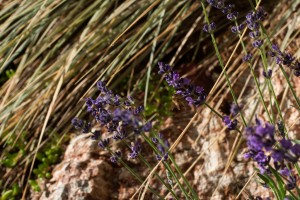
I wanted to reflect my newfound appreciation for zeroscaping in my home in Boise. Like most westerners, we Idahoans tend to be conscious of how much water we use- which is important in areas with as little rainfall as we get. Boise is in a semi-arid climate zone, often referred to as a “high desert.” At an altitude of 2,700 feet and with an average yearly precipitation of less than 12 inches a year, we’re not so different from Tucson. So I knew that my efforts to prevent water waste wouldn’t be unwelcome.
To reduce my water waste, I chose to expand my patio out over where some of my exotic flower beds had been, the ones that I spent most time watering. Even better, I added a stone platform of landscaping rocks along my back fence. On it I have perched a fire pit- it serves as a fantastic place to gather friends during summer evenings.
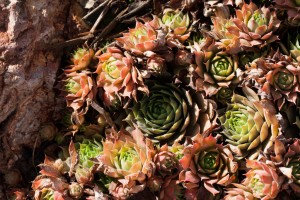
As for plants, I’ve prioritized the planting of lavender (one of my absolute favorites) and the use of native grasses like the Idaho fescue. Best of all, in the crevices in my stones, I’ve nurtured succulents that add visual interest. They’ve become one of my favorite parts of the garden, peeking up from the stones! I still keep my roses and other care-intensive exotic plants, but I’ve tempered my hobby with eco-friendly landscaping to reduce my footprint.
Lessons Learned

I struggled with the idea that gardens didn’t need to be lush to be beautiful. I still prefer nurturing plants to landscaping, but when it comes to resource management, zero-scaping has amazing benefits. I struck a balance in my own yard by using my space carefully and realizing that not every place in my garden needs plants. A yard with a combination of hard and organic elements is a thing of beauty, pleasing to the eye and the environment.
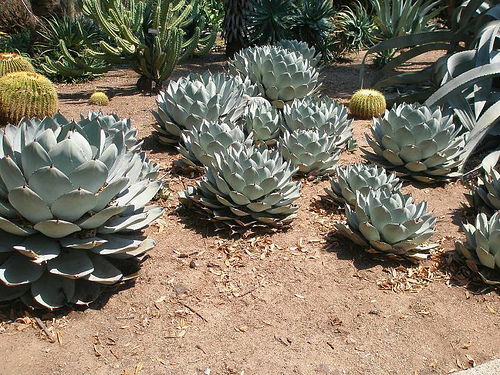
 Can Renting a Hybrid be a Much Better Deal than Driving Your Own Car?
Can Renting a Hybrid be a Much Better Deal than Driving Your Own Car?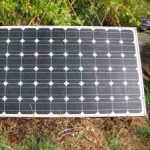 Three Tips for Buying Used Solar Panels for Pennies on the Dollar
Three Tips for Buying Used Solar Panels for Pennies on the Dollar How “Green” are Our E-waste and Computer Recycling Programs?
How “Green” are Our E-waste and Computer Recycling Programs?